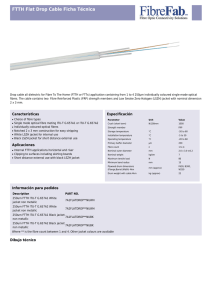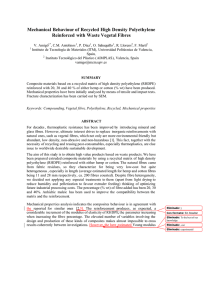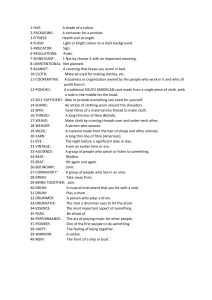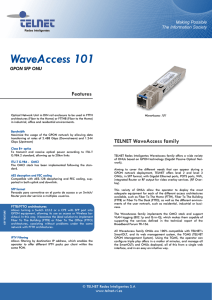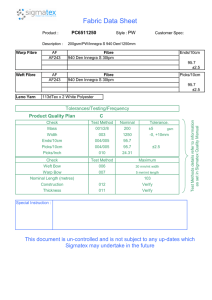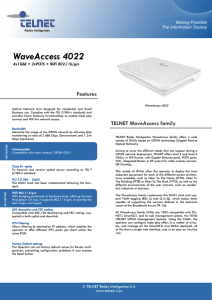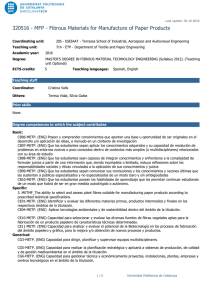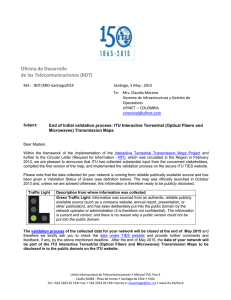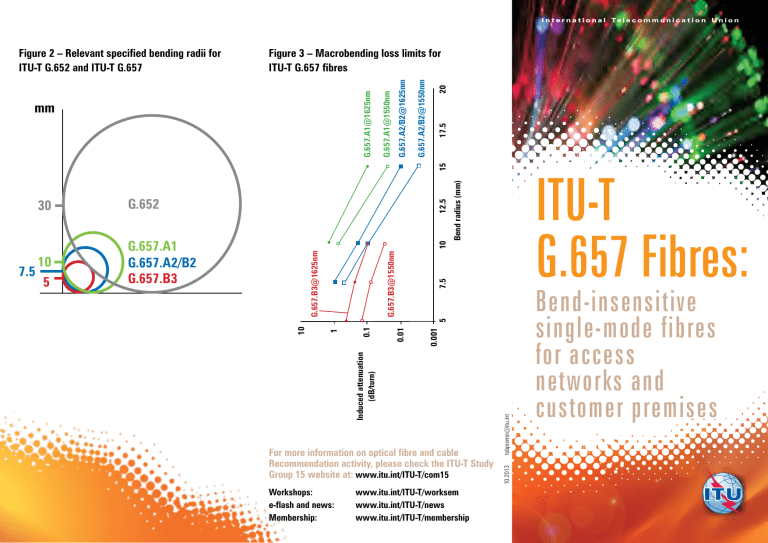
I n t e r n a t i o n a l Te l e c o m m u n i c a t i o n U n i o n 20 17.5 The Advanced Video Coding Standard Bend radius (mm) 7.5 10 ITU-T G.657 Fibres: Workshops: e-flash and news: Membership: www.itu.int/ITU-T/worksem www.itu.int/ITU-T/news www.itu.int/ITU-T/membership 10.2013 For more information on optical fibre and cable Recommendation activity, please check the ITU-T Study Group 15 website at: www.itu.int/ITU-T/com15 tsbpromo@itu.int 0.001 0.01 5 G.657.B3@1550nm 0.1 Induced attenuation (dB/turn) 1 10 5 G.657.A1 G.657.A2/B2 G.657.B3 G.657.B3@1625nm G.652 10 7.5 30 12.5 15 G.657.A2/B2@1550nm G.657.A1@1550nm mm G.657.A2/B2@1625nm Figure 3 – Macrobending loss limits for ITU-T G.657 fibres G.657.A1@1625nm Figure 2 – Relevant specified bending radii for ITU-T G.652 and ITU-T G.657 Bend-insensitive single-mode fibres for access networks and customer premises ITU-T The long-time leader in optical single-mode fibre and cable standardization Recommendation ITU-T G.657: "Characteristics of a bending-loss insensitive single-mode optical fibre and cable for the Access network" www.itu.int/itu-t/studygroups Main aspects / attributes: • • • Background and history: • The roll out of fibre-to-the-home (FTTH) networks has been of global importance since the early 2000s, requiring a dedicated single-mode fibre cable Recommendation. • Operators and manufacturers jointly worked on swift introduction of this Recommendation in 2006 and its updates in 2009 and 2012. • Since its introduction, ITU-T G.657 optical fibre cables have seen a steady increase in the total optical fibre cable market. Benefits: • ITU-T G.657 optical fibre cable offers flexible characteristics for easier deployment in streets, buildings and homes. • ITU-T G.657 optical fibre cable reduces the roll-out cost for operators and the total cost of ownership (TCO) of an FTTH network. Increased flexibility in optical fibre cables, allowing improved installation in tight corners of buildings. Smaller cabinets, pedestals, enclosures and terminations, which are important where space is at a premium. (e.g., in apartment buildings). More engineer-friendly installation leading to less re-work. ITU-T G.657 is split into two main parts: • Category B fibres for short distances at the end of Access networks in bending-rich environments (e.g., buildings). Figure 1 – Structure of ITU-T G.657 (2012) G.657 (2012) Each category (A and B) is divided into two sub-categories: G.657.A1 and G.657.A2 G.657.B2 and G.657.B3 For access networks These sub-categories have the following minimum specified bending radii: G.657.A1:10 mm G.657.A2 and G.657.B2: G.657.B3:5 mm Compliance here means adherence to the referenced Recommendation (ITU-T G.652, category D) meeting or exceeding the values of the specified attributes. ITU-T G.657.B2 and ITU-T G.657.B3 fibres are fully compatible with ITU-T G.652.D fibres (only small differences in chromatic dispersion and polarization mode dispersion (PMD). G.652.D compliant all bands 1260-1625nm For end of Access networks (e.g., in/near buildings) G.652.D compatible all bands 1260-1625nm 7.5 mm ITU-T G.657.A1 and ITU-T G.657.A2 fibres are fully compliant with ITU-T G.652.D fibres. • Category A fibres for Access networks. Compatibility here means that these fibres will introduce negligible system impairment or deployment issues, but may not be compliant to the referenced Recommendation (ITU-T G.652.D). Additionally, another favoured application is in central offices where ITU-T G.657 fibres mitigate the risk of communication failure and/or high power damage under inadvertent bending. Care needs to be taken to not impact long-term reliability. Examples of the relationship between minimum bend radius and maximum power can be found in IEC TR62547. A1 Rmin = 10 mm A2 Rmin = 7.5 mm B2 B3 Rmin = 7.5 mm Rmin = 5 mm
